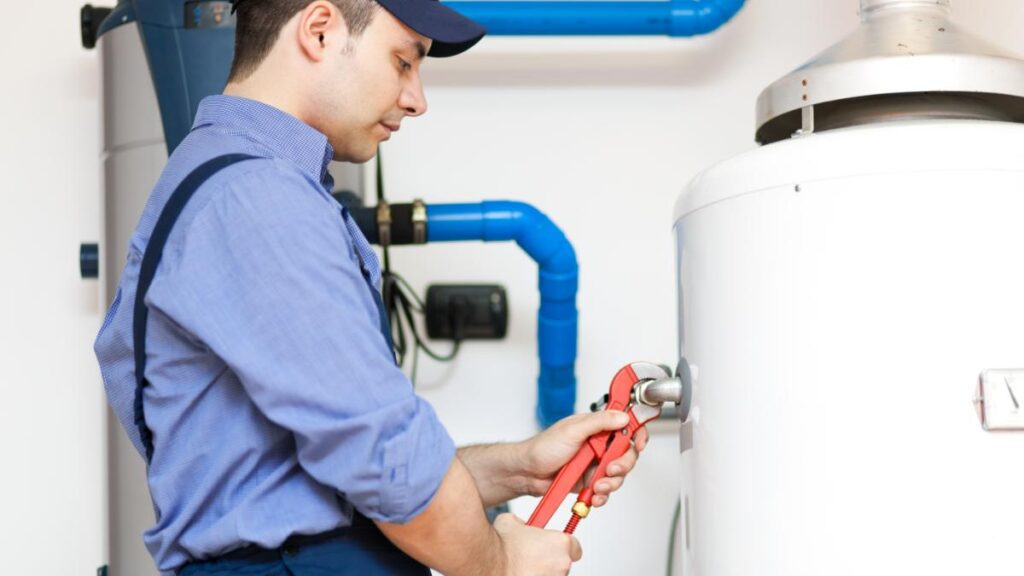Staying up-to-date on the health of your water heater is part-and-parcel to keeping your home in tip-top shape. Knowing the signs that your water heater is malfunctioning will help you service your system before cost and risk escalates, increasing the lifespan of your water heater and ensuring it stays efficient as long as it can.
Despite regular servicing and maintenance however, all water heaters have a finite lifespan: for tank-based systems, this tends to top out at around 10 years whereas tankless systems usually live for 20. This finite lifespan comes from the constant use, exposure to hard water, and the degradation of discrete parts over time. Oxidation and lime scale build-up can begin to affect the quality of your water, the efficiency of your unit, and – importantly – the safety of your home: it is thus a responsible idea to replace your water heating system before it fails.
But how do you know you need to replace it? What are some of the signs? When is repairing the right option and when is it time to start looking at new models? Working with a trusted plumbing company will allow you to diagnose your system and isolate the variables that point toward replacement – with Pink Plumbing you’ll have certified technicians walking you through every step of the process and ensuring your new system is perfect for your home and lifestyle.
Signs You’re Ready for a New Water Heater
1. Leaking
Leaking is usually cause for concern and is one of the main signs that your water heater needs to be replaced. If leaking isn’t addressed quickly, security risks and damage to your home can quickly result. While some causes for leaking can be fixed with servicing, they are usually solved by band-aid solutions that will inevitably require replacement.
Over the course of a water heater’s life, the degradation of various components can cause water-tight seals to break down, allowing water to seep through. If your gaskets, water line connections, or drain valves have degraded or worked loose, you’ll notice pooling outside the base of the water heater. While certain issues like loose water main connections can often be fixed with a few turns of the wrench, replacing gaskets and valves will require a full drain of your water heater, the removal of electrical components, and the detachment of your system from power.
In the worst-case scenario, leaking can also be an indicator of a damaged tank: over the years, mineral build up and oxidation can occur on the inside of the tank, wearing down the walls and making your system more susceptible to expansion and contraction. In a high-pressure system like a hot water heater, this movement within the tank can begin to create micro-fissures and cracks, eventually letting water through. This is a serious problem: left unattended, pressure changes in a cracked tank or damaged water heater system can cause large-scale flooding and worse – explosions. Don’t wait around to handle a water heater leak.
Leaking is always a sign to call a specialist and tends to be ample cause for replacement. If you notice water pooling around your unit, call Pink Plumbing – with same-day replacement services, we’ll get you back up-and-running in no time.
2. Increased need for servicing
If you notice that you’ve had to call a water heater technician more than twice in the last year for minor repairs, your water heating system is likely reaching the end of its life. While water heaters need regular maintenance (every year, on average), constant servicing begins to drain your wallets and speaks to a drop in efficiency of your unit.
With an older, finicky water heater, you may find yourself needing to call a tech often – at a certain point, you would be saving money by purchasing a newer, more efficient, and more technologically-advanced unit. Modern, sophisticated units are often easier to service, less prone to malfunction, and more efficient, saving you money on utility bills and maintenance over the course of the system’s life.
3. Changes in water quality (color, volume, etc)
Keeping an eye on the quality of your water is key to quickly picking up changes in your water heater’s operations.
Color is key: noticing cloudy, sandy, or reddish water indicates corrosion on the inside of the tank. You can isolate whether this issue is in your tank by running cold water and comparing: if both hot and cold water come out discolored, the rust you’re noticing has to do with your pipes. If it’s only happening with hot water, your tank is damaged.
Changes in color and texture can also mean sediment build-up in your tank. Lime scale deposits that form on the sides and on the base of the tank cause particulates to enter your water supply: cloudy, sandy, and grainy water quality indicates that your water heater needs to be serviced. Homeowners and technicians can drain the tank, clear it of sediments, and then start it up again – if the issue continues, it is likely the tank itself is damaged and requires replacement.
You may also notice that the amount of hot water you have access to has gone down in comparison to previous years of use. If your water isn’t getting as hot as it used to, if you are running out more quickly than before, or if you suddenly don’t have any hot water, you might be dealing with some issues that require replacement. While these problems can sometimes be fixed by recalibrating the heater’s internal thermostat, a drop in hot water availability may also speak to the malfunctioning of your heating element. This can be rectified through the help of a technician, but older models may require hard-to-find parts and servicing can quickly become expensive. When faced with the option to replace an expensive part for an older unit, it can often be more economical in the long-term to replace the unit as a whole.
4. Water heater noises
Much like changes in the quality of your hot water is an indication of sediment and lime scale build-up, hearing new noises coming from your water heating unit is a sign of gunk in your tank. After years of use and without regular descaling and drainage, sediments can begin to form and harden at the base of the tank. The unit will need to work harder to maintain the stored water’s heat and the flow rate will decrease.
The banging sound you often hear from a malfunctioning water heater is the hardened sediment being tossed against the sides of the tank. On top of making your water heater less efficient, these hardened minerals can contribute to the degradation of the tank walls and even cause cracks and fissures. With pressure risks and flooding potential, weird noises from your water heater is always a reason to call a specialist – depending on the severity of the build-up and the damage to the tank, replacement is often suggested.
Increasing utility bills
If you notice your monthly utility bills are increasing but your water use hasn’t changed, you are likely dealing with an efficiency issue in your hot water heater. As you may have noticed throughout this article, the efficiency of your unit is relative to many factors and does not always need replacement to solve: descaling, draining, and part replacement can be enough to give your unit a few more years of life. However, noticing changes in your utility bills indicates that your water heater is not operating optimally – on top of the extra money you’re losing every month, you’ll likely have to service the unit more often as it gets older and less efficient. Replacement can often be cheaper in the long-term, saving you money over time.
5. Water heater age
The last main indicator that your water heater needs to be replaced is its age. If your water heater is over 10 years old, it’s time to get a new one: the malfunctions and degradation of parts after a decade-long exposure to hard water means an increase in the need for servicing and repair. Efficiency decreases, operating costs go up, water quality changes, and security risks increase.
If there is no explicit date listed on the label of your water heater, the serial number on your water heater will allow you to pinpoint how old it is, especially if you didn’t purchase it yourself and are unsure of the age. The first letter will usually indicate the month (A – January to L – December), followed by a number that indicates the year: A-18 would mean your water heater was installed in January of 2018.
Despite not having any explicit problems with your water heater, after 10 years of use it is prudent to have a specialist examine the unit and determine if any action is needed.
Ready for an Upgrade? Trust PINK
If you are ready to upgrade to a new water heater, our technicians at Pink will help you choose the right model for you and efficiently install it in your home. We proudly install all of the most trusted brands in water heaters, including Navien, Bradford, and Rheem.
For more information or to book a plumber, give us a call at 604-GOT-PINK



